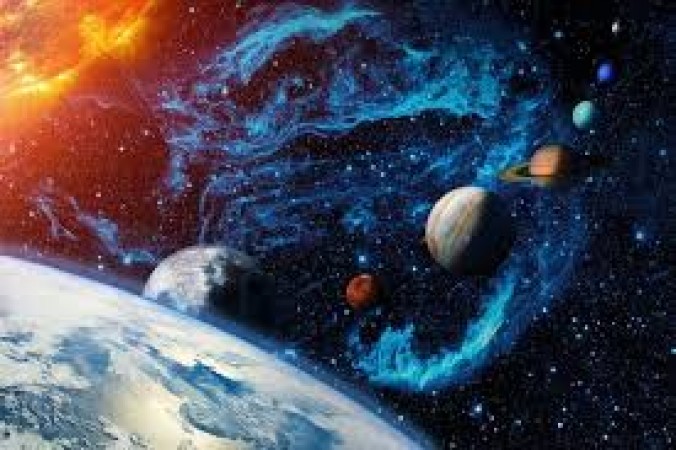
In the vast cosmic ballet of our solar system, planets gracefully waltz around the Sun, each following its own unique tempo. Among this celestial choreography, one question often piques our curiosity: which planet is the speediest dancer, whirling around the Sun with the greatest swiftness? Join us as we embark on a journey through our solar system to unravel this intriguing celestial mystery.
Before we dive into the heart of the matter, let's take a moment to appreciate the grandeur of our solar system. It consists of eight primary planets, each with its distinct characteristics and orbital patterns. These planets, in order of their distance from the Sun, are Mercury, Venus, Earth, Mars, Jupiter, Saturn, Uranus, and Neptune.
Our quest to discover the fastest revolving planet commences with Mercury, the closest planet to the Sun. Mercury's proximity to the Sun influences its staggering orbital speed. It takes a mere 88 Earth days for Mercury to complete a full orbit around the Sun. This astonishing pace makes Mercury the champion of speed in our solar system.
While Mercury claims the title of the fastest orbit, Venus is the planet that perpetually chases its neighbor in the orbital race. Venus, often referred to as Earth's "sister planet," has a slightly longer orbital period of approximately 225 Earth days. Despite lagging behind Mercury, Venus's graceful pace still impresses.
Earth, our home planet, is next in line. Earth orbits the Sun in about 365.25 days, defining a year as we know it. This steady rhythm provides the perfect balance for life to flourish, with our planet's distance from the Sun offering the ideal conditions for the existence of liquid water—a prerequisite for life as we understand it.
Mars, often called the "Red Planet" due to its distinctive color, takes a leisurely stroll around the Sun compared to its inner neighbors. It completes an orbit in approximately 687 Earth days. While not the fastest, Mars' unique characteristics have fascinated scientists for decades, sparking numerous missions to explore its mysteries.
Moving beyond the inner rocky planets, we encounter the gas giants of our solar system, starting with Jupiter. Jupiter is the largest planet, with an orbital period of about 11.86 Earth years. Its majestic waltz around the Sun is a sight to behold, and it exerts a significant gravitational influence on the entire solar system.
Saturn, known for its stunning rings, has an orbital period of approximately 29.46 Earth years. Its graceful twirl around the Sun showcases the splendor of the outer planets. Saturn's rings add an enchanting touch to its celestial dance, captivating astronomers and stargazers alike.
Uranus, with its peculiar axial tilt, rotates almost perpendicular to its orbit around the Sun. It takes roughly 84 Earth years to complete one full orbit. This unique tilt and extended orbit make Uranus a fascinating subject of study in our solar system.
Finally, we reach Neptune, the outermost planet in our solar system. Neptune's dance around the Sun is the slowest of them all, taking approximately 164.79 Earth years for a single orbit. This distant waltz brings us to the outer limits of our cosmic neighborhood.
In this cosmic orchestra, each planet contributes its own tempo and rhythm to the symphony of our solar system. The inner planets—Mercury, Venus, Earth, and Mars—move swiftly and harmoniously, while the outer giants—Jupiter, Saturn, Uranus, and Neptune—engage in a slower, more majestic performance.
Several factors influence a planet's orbital speed. The most significant of these factors is the planet's distance from the Sun. The closer a planet is to the Sun, the faster it must move to maintain its orbit due to the stronger gravitational pull.
Additionally, a planet's mass can also influence its orbital speed, as a more massive planet requires more velocity to counteract the gravitational pull of the Sun.
In the mesmerizing dance of our solar system, Mercury takes center stage as the fastest revolving planet, completing an orbit in just 88 Earth days. Venus, Earth, and Mars follow suit, each with its unique rhythm and charm. The gas giants, led by Jupiter and Saturn, perform their majestic waltz, while Uranus and Neptune gracefully twirl in the outer reaches.
As we continue to explore and understand our celestial neighborhood, the cosmic ballet of our solar system remains a source of wonder and inspiration. Each planet's speed adds a unique note to the symphony of the cosmos, reminding us of the beauty and complexity of the universe. So, the next time you gaze up at the night sky, remember that each twinkling point of light represents a planet in its own orbit, contributing to the enchanting spectacle of the celestial dance that is our solar system.
The Designer Who Redefined Bollywood Fashion
Stylish calling watch made of stainless steel has arrived! Amazing features available at low price
A Fresh Look for Parliament Staff: Uniform Makeover as New Building Beckons